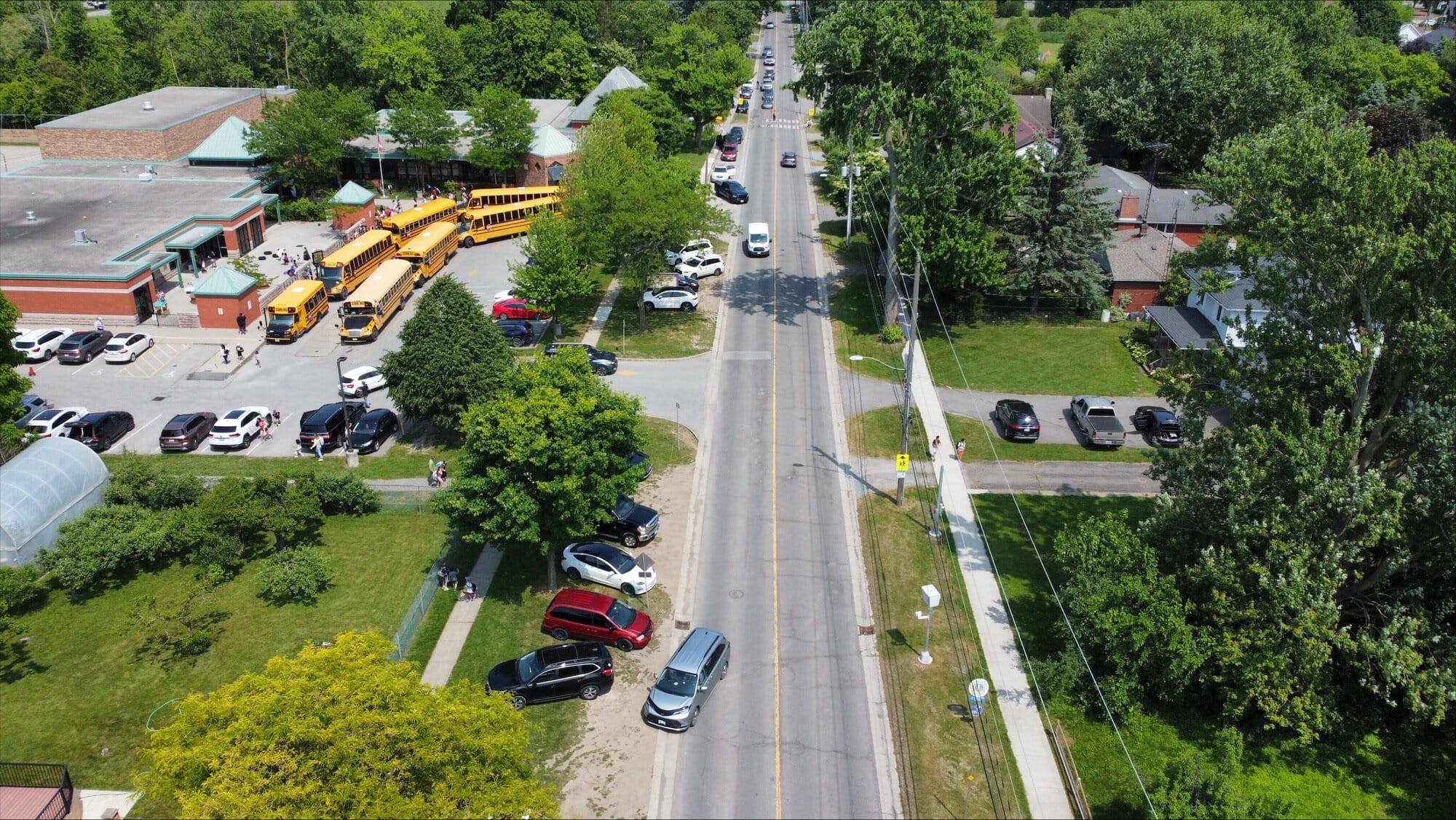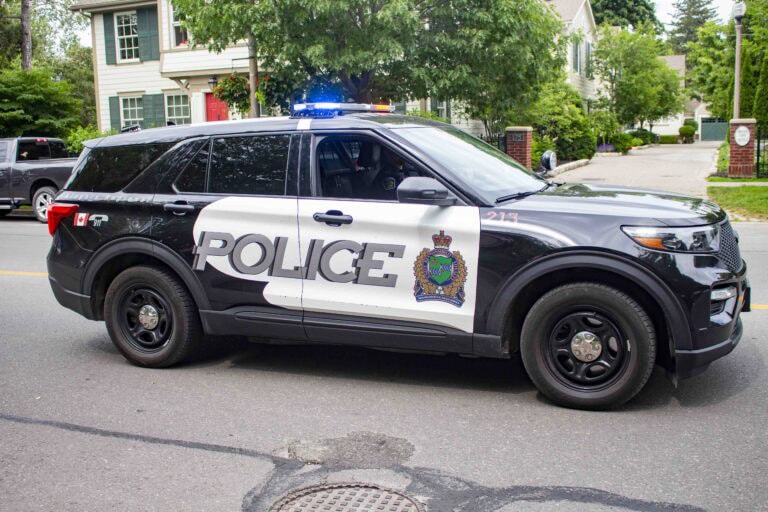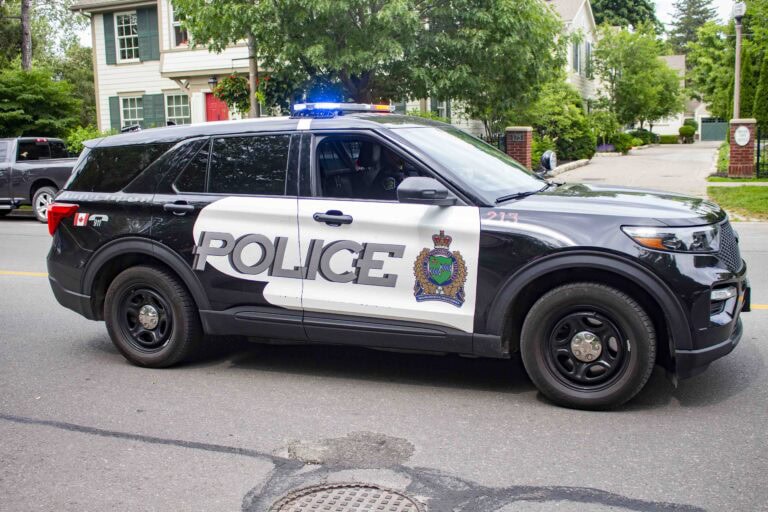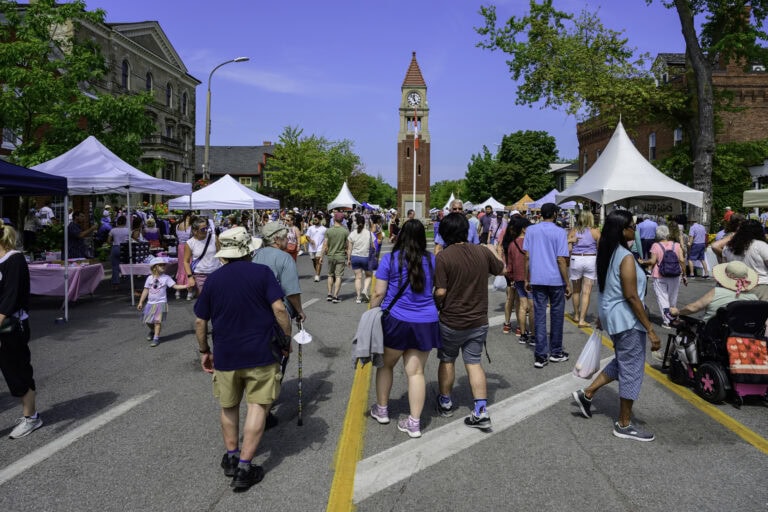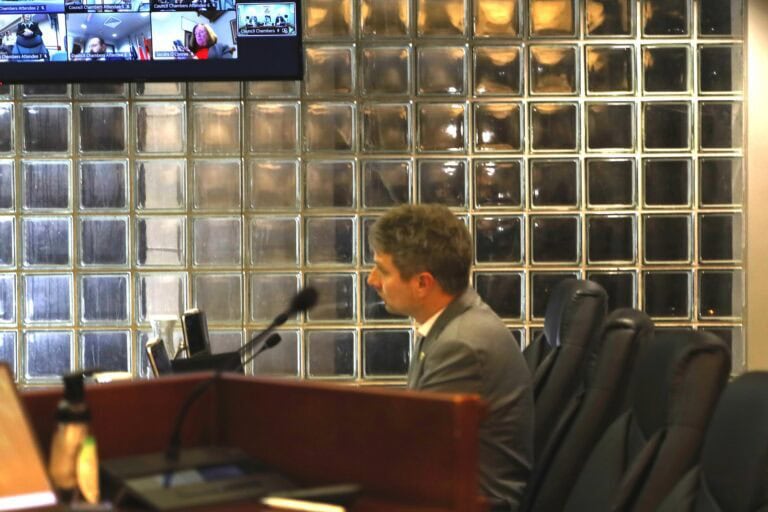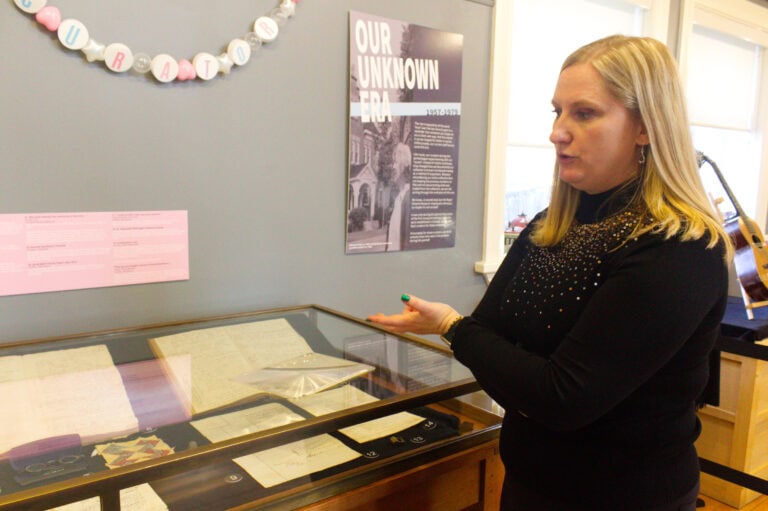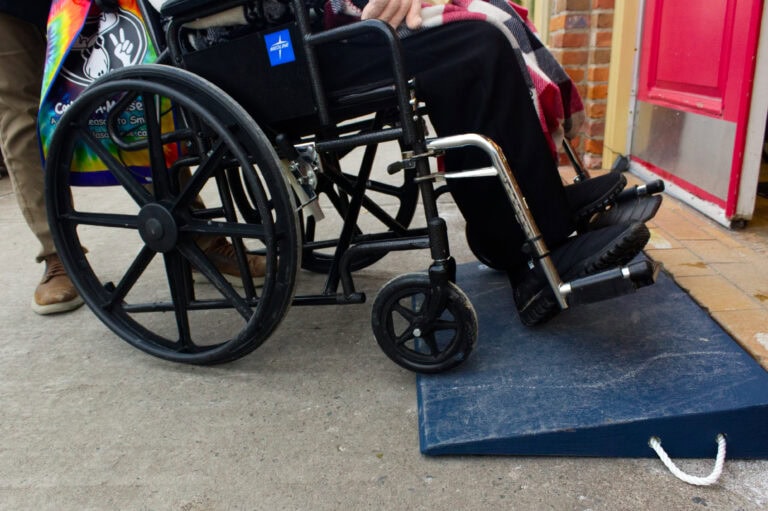Overcrowding at St. Davids Public School has prompted renewed calls for safety improvements, but the District School Board of Niagara says it won’t provide answers or possible solutions until trustees receive a report this fall.
In an Aug. 8 letter to the school board, the Town of Niagara-on-the-Lake and Niagara Regional Police, parent Melanie Marull urged immediate action to stop cars from driving and parking on sidewalks outside the school.
She called it a “long-standing and dangerous issue” that puts children at risk.
“Sidewalks are intended to be safe spaces for children and pedestrians, particularly around an elementary school,” Marull said.
“The continued presence of vehicles on these walkways is not only illegal, it is a threat to life.”
Marull said growing vehicle and student traffic is increasing “well beyond the site’s capacity,” adding that congestion and improper flow are also blocking emergency access routes.
The Lake Report reached out to the school board with questions about enrollment and overcrowding, but spokesperson Milica Petkovic said the board will not comment until trustees receive recommendations at its Oct. 14 program and planning committee meeting.
“We will follow our usual process,” Petkovic said in an email. “The questions asked will be addressed when staff present a report.”
In the meantime, she said parents with concerns “are welcome to reach out directly to their school principal.”
Petkovic confirmed the school board spent $60,000 to convert space into one additional classroom at St. Davids before the school year began. The funds were allocated in a previous budget year as part of the board’s multi-year capital plan.
Coun. Adriana Vizzari, who has children at St. Davids, said she continues to hear from worried families.
“With five portables on site, space is tight and families are understandably concerned,” she said in an email. “I really think the focus needs to be on (the District School Board of Niagara), since they control enrollment and placement.”
She said council will continue to advocate, but the board must show a plan — “both to manage enrollment now and to commit to a permanent solution.”
Marull said the “unchallenged” issue is not isolated but a recurring and serious threat to student safety.
“We cannot wait until another tragedy occurs to act,” she said, pointing to the recent death of a young boy at a local summer camp as a reminder of the risks. She said the incident underscores the consequences of unchecked traffic violations “in areas where children should be safest.”
She urged officials to step up enforcement around the school, install barriers to block cars from sidewalks, add signage and adjust traffic flow at drop-off and pickup times.
Marull also called for clearer school boundaries to ease overcapacity and better communication with residents about the legal and safety risks of their actions.
“Our children’s safety must be non-negotiable,” she said, adding that children should be able to walk to school safely, not weave around cars blocking sidewalks.
“This problem is not only foreseeable, it is preventable,” she said.
Despite “multiple phone calls and emails exchanged with (officials’) offices over the past several months,” Marull said there has been no meaningful action.
She urged officials to respond with documented, co-ordinated steps each department can take to resolve the issue.
The Town of Niagara-on-the-Lake confirmed it is still waiting for a presentation it requested from the DSBN on its long-term accommodation plan.
“At this time, a presentation has not yet been received. However, staff have had meetings with various school boards and remain committed to working together on this important matter,” said the town’s communications co-ordinator, Marah Minor.
Petkovic said the fall meeting agenda will be posted on the board’s website, with the report and minutes released afterward.
Despite refusing to answer media questions, the school board said it takes communication with its learning communities seriously and will provide timely, accurate updates.



